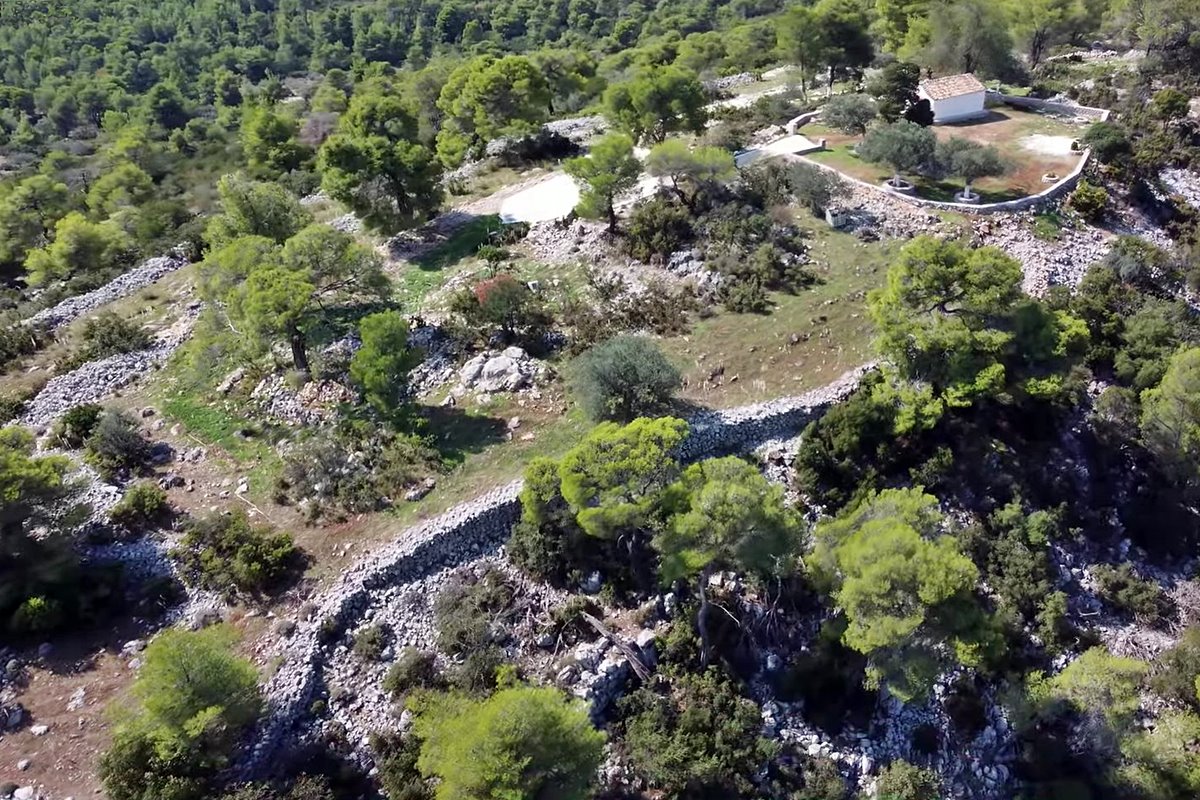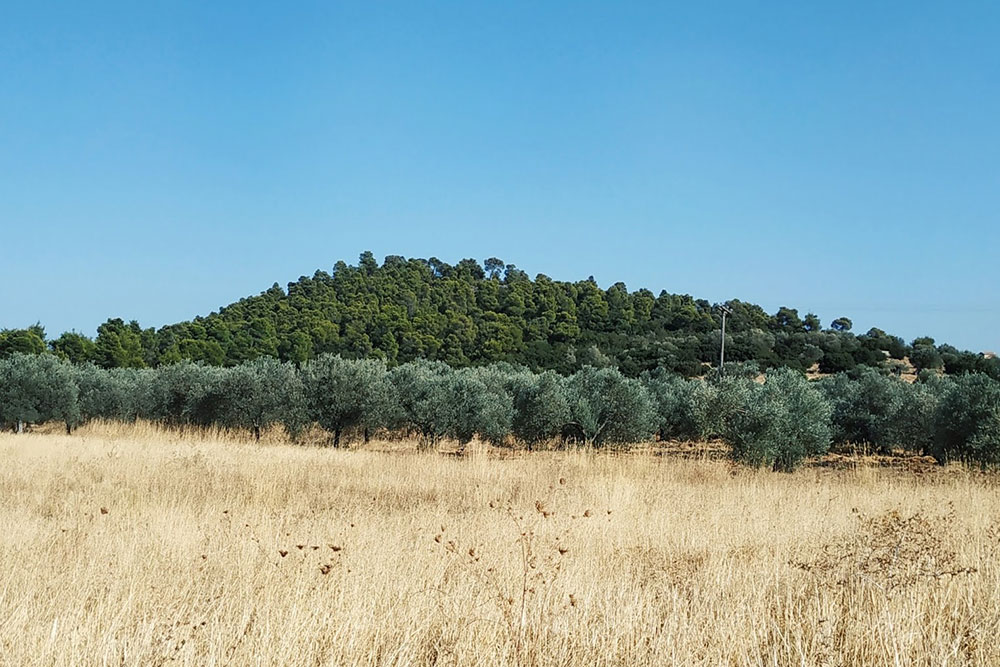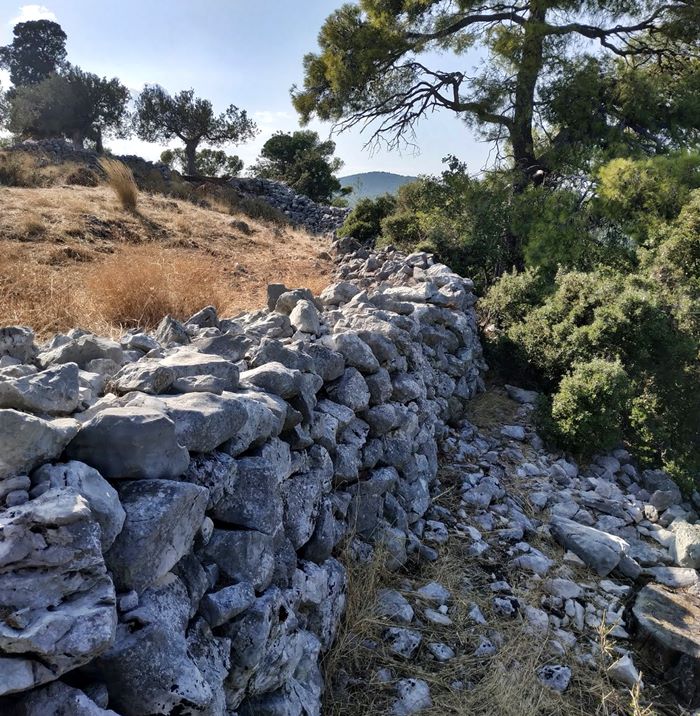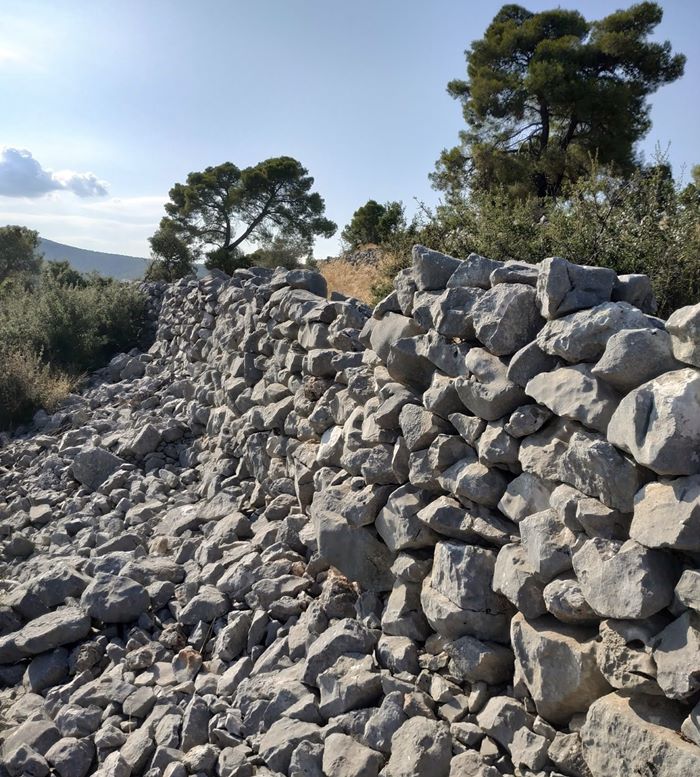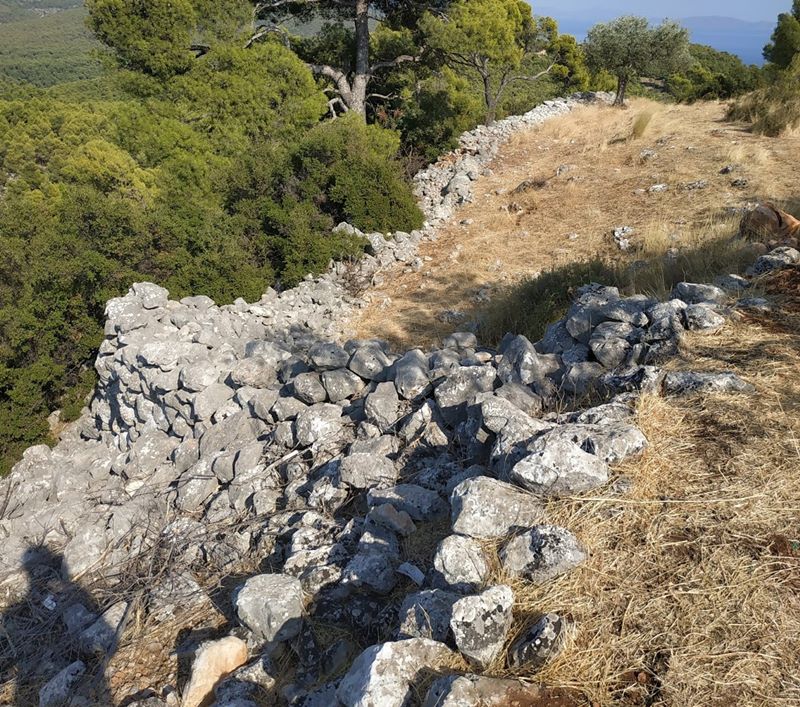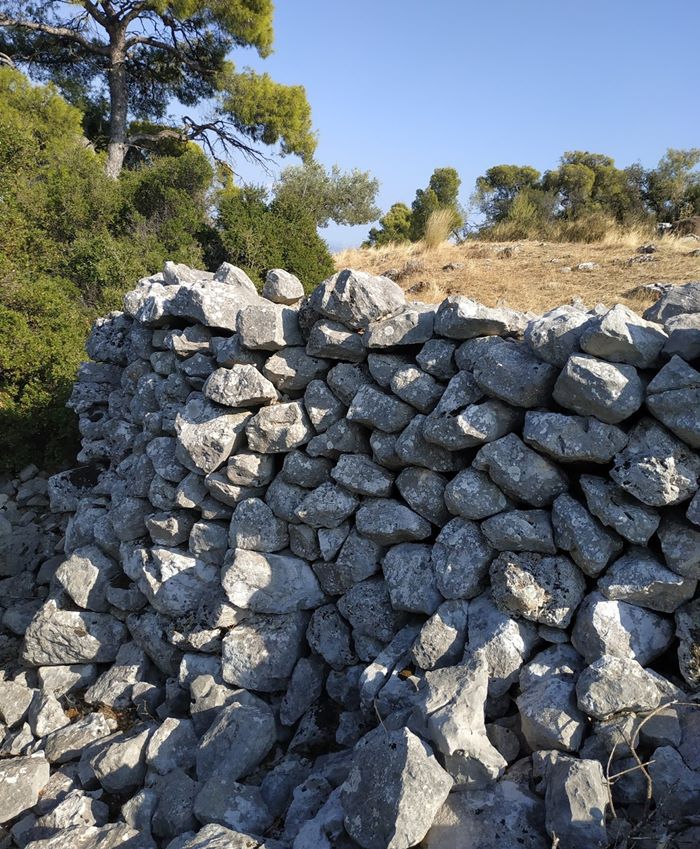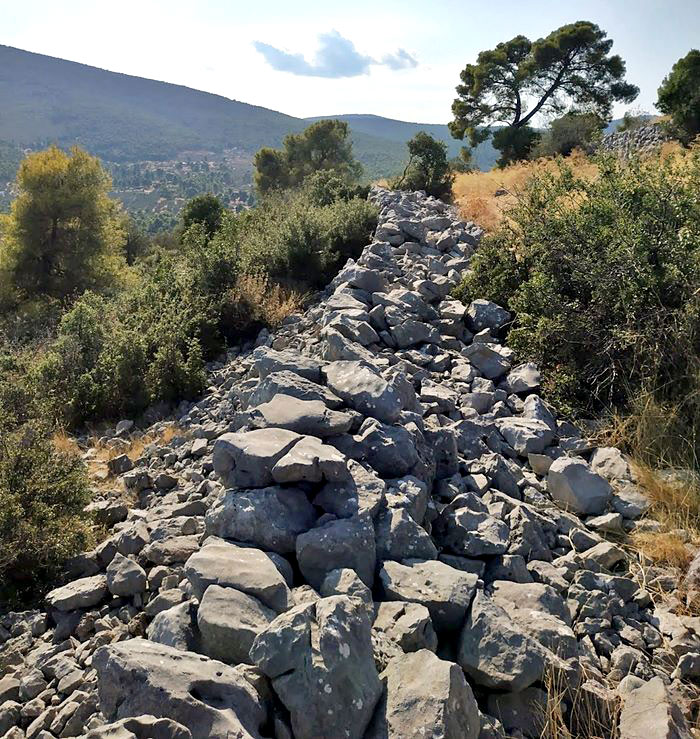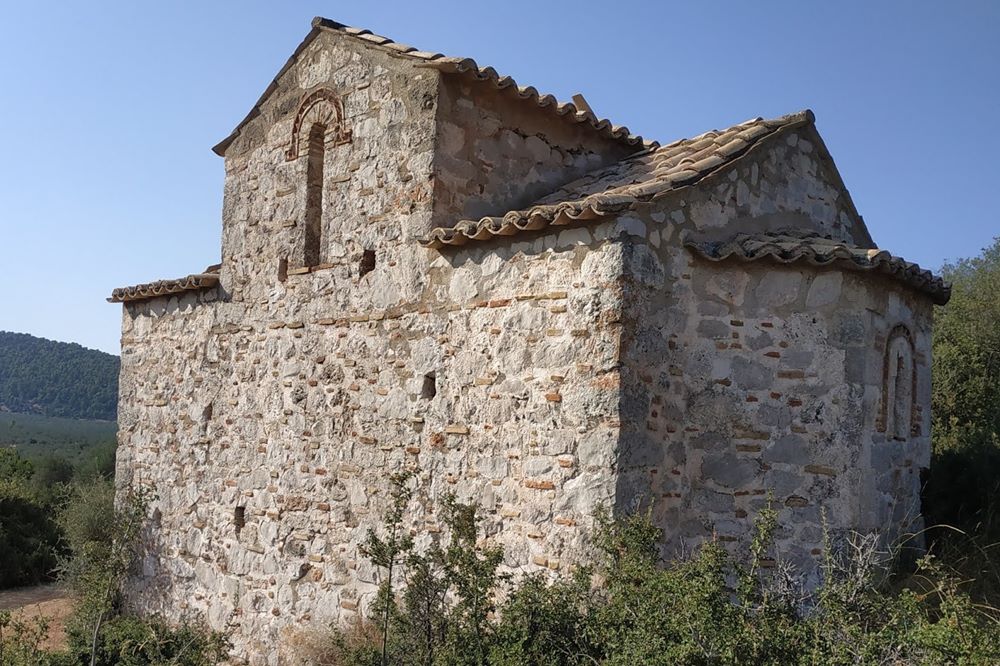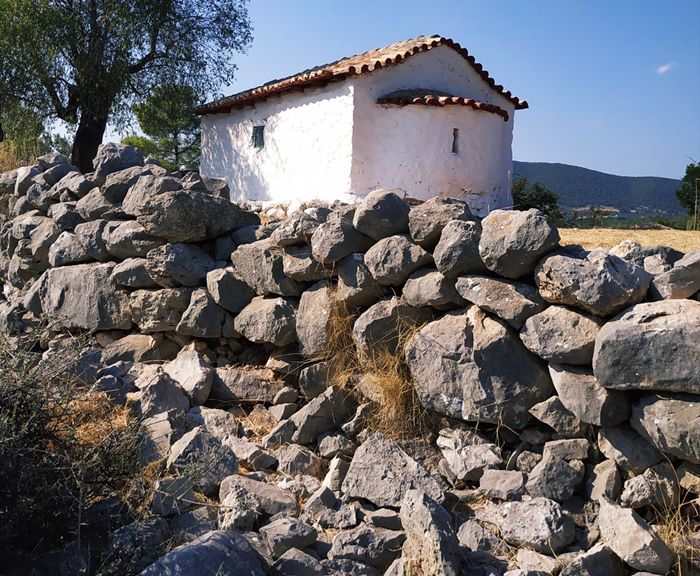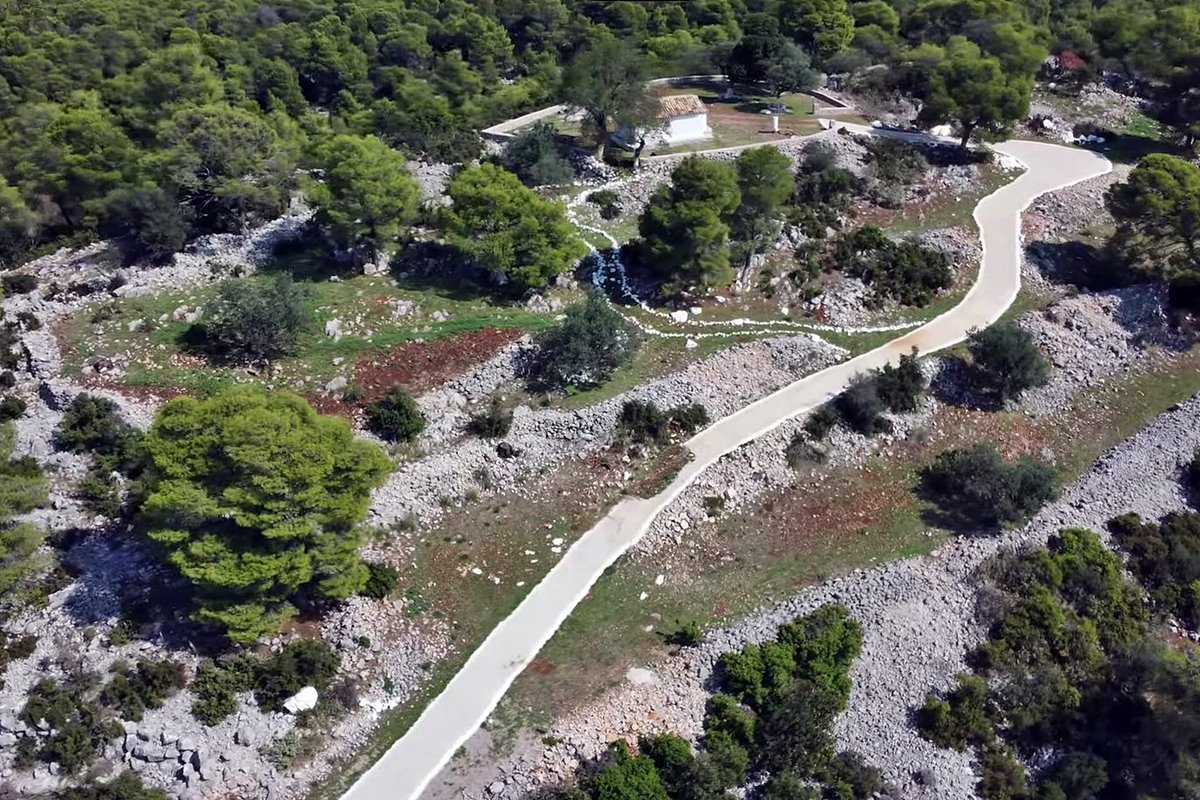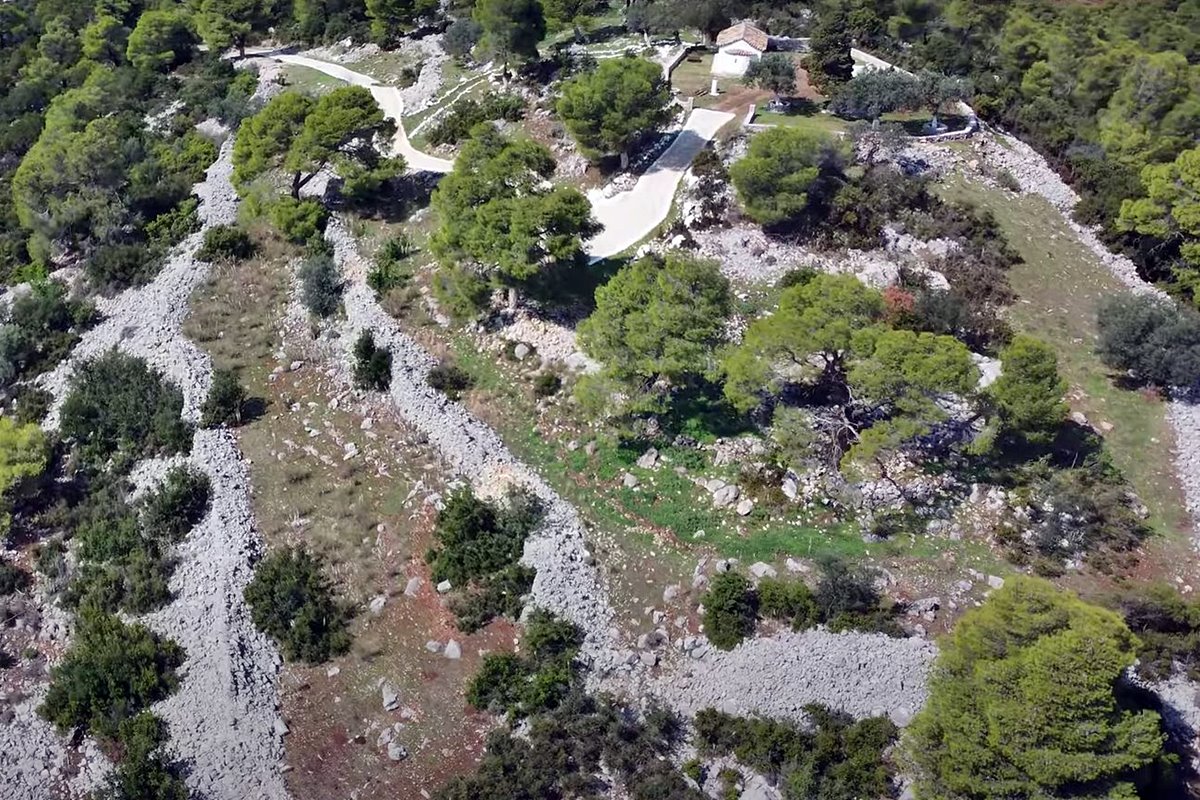Sophiko, Corinth, Corinthia,Peloponnese
Larisi castle
| Location: |
| In the Larisi region 3.5km SE of Sofiko and 3km NW of Korfos in Corinth arrea. |
| Region > Prefecture: | 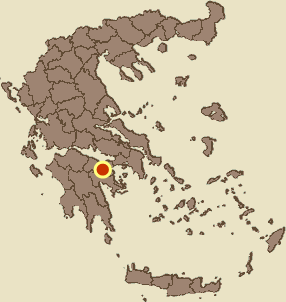 |
| Peloponnese Corinthia | |
| Municipality > Town: | |
| City of Corinth • Sophiko | |
| Altitude: | |
|
Elevation ≈ 414 m (Relative Height≈60 m) |
| Time of Construction | Origin | |
| perhaps 13th event. | Late-BYZANTINE |
|
| Castle Type | Condition | |
| Dry-Stone Fortification |
In Ruins
|
Ruins of a stone fortification on the hill of Profitis Elias, in the Larisi area of the territory of Ancient Solygeia in the Corinth region, southeast of Sofiko.
History
There is no information from historical sources about this fortification, neither findings, since it was never researched. So we are not in position to know with some acceptable accuracy the chronology of the construction. However, there is evidence that this might have been a construction of the late-Byzantine period. The evidences for this hypothesis are:
1. The Larisi fortification is very similar to the Tzalika castle which is at an air-distance of just 4km to the north. The castle of Tzalika has been researched and we know that it is dated in the Late-Byzantine period, between 13th and 15th century.
2. There are several remarkable Byzantine churches in the broader Solygeia region and two of them are in the Larisi area. One of them, Agia Triada dated in the 13th century, is at the foot of the hill, 300m from the castle. The location of the churches is considered remote today, but when they were built, they must have been part of one or more settlements. It is reasonable to assume that the settlements existed around the same period with the churches, i.e. in the late-Byzantine period (13th century being the most probable time).
Having said all that, the name Larisi (which is of Pelasgian origin —a real old root, meaning fort) and the absence of mortar from the stone structure create some thoughts about the origin of the castle: it could be ancient. This is not very likely however, because the ancient forts had a much better construction quality, and those with lower quality stonework could not have been preserved –since antiquity– to the level that Larisi is preserved.
Structure, Fortification & Buildings
The remains of the walls are visible along the entire perimeter of the fortification, which is about 350m. The preserved height is nowhere near the original, measuring on average 1.5m. The wall was a low quality structure made of semi-processed stones without the use of mortar.
In the middle of the interior there is a relatively modern chapel of Profitis Elias, which apparently was built on the foundations of an older building that could be a church or a keep.
| First entry in Kastrologos: | October 2019 | Last addition of photo/video: | April 2024 |
Sources
- Location, info and photographs (2-9) by Sakis Amfitreidis and his blog ΑΜΦΙΤΡΕΙΔΗΣ (September 2019)
- Video by G Traveller Κάστρο Λαρίσι | Larisi castle
source of the photos 1, 7, 8 (January 2024)
|
|
| Access |
|---|
| Entrance: |
| Free access |
| Similar |
|---|
| Castle of Alataria |
| Castle of Mount Escouve |
| Gyclos Fort |
| Fort of Perama |
| Fort of Zarakas |



